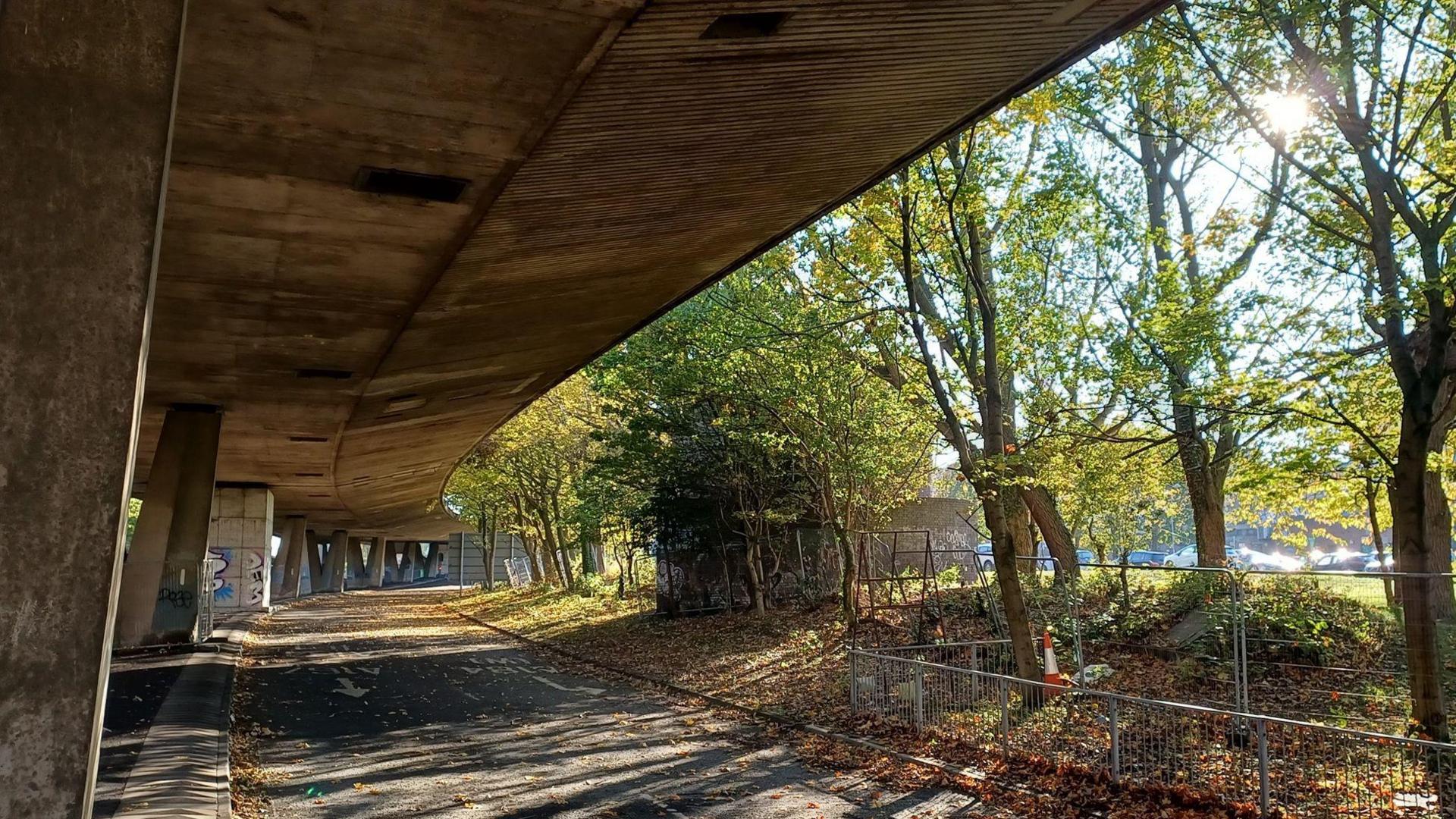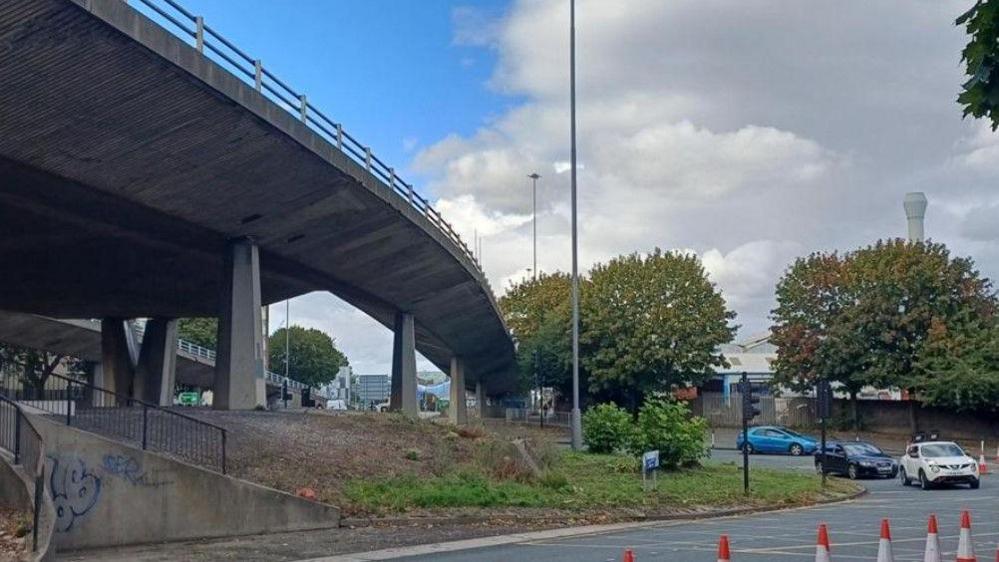Doomed flyover missed key safety test for 28 years

The Gateshead Highway flyover is now in the process of being demolished
- Published
A key safety test was not conducted for 28 years on a major flyover now condemned and awaiting demolition after crumbling concrete was discovered.
The A167 Gateshead Highway flyover, which dates to the 1960s, was suddenly closed in December 2024 due to safety concerns.
A report on the structure, obtained by the BBC, said a special type of inspection considered vital for predicting and preventing structural collapse in this particular design of roadway had not been conducted since 1996.
Gateshead Council said it believed the other inspections and maintenance regime it had for the flyover had been "sufficient" and it had always done "what was appropriate to maintain public safety".
The BBC has seen the latest principal inspection report produced by infrastructure consulting firm Aecom.
Its final iteration was issued in January 2025, a month after the flyover was shut, but is based on a series of inspections conducted by the firm between November 2023 and January 2024.
The document outlines a litany of issues with the structure including extensive water damage, several failed repairs and concrete breaking away.
One of the main conclusions of the report was that a new post-tensioned special inspection (PTSI) - used for "post-tensioned" structures that have steel cables running through them to reinforce the concrete - was needed as a "matter of urgency".

The flyover was deemed unsafe late last year and has been closed since then
Over time, the steel cables are at risk of damage for several reasons including contact with moisture, according to Habib Ali, a chartered bridge engineer from West Yorkshire.
"When one of them breaks due to corrosion, the structure has the potential to collapse," he said.
A PTSI is an intrusive test to determine the condition of the cables and is meant to safeguard against the risk of sudden collapse.
Mr Ali acknowledged PTSIs are not meant to be conducted regularly but said 28 years was "too long" between inspections, "especially for a structure of this size".
The engineer said the cost of a PTSI could run into "six figures".

A temporary prop was installed last year to allow Metro trains to run below the closed flyover
Data collected by the RAC Foundation suggests the lack of PTSIs on post-tensioned structures is a common feature across the UK.
According to the latest statistics it collected in 2020, more than 40% of post-tensioned bridges in the country had not undergone PTSIs in the previous 18 years.
Nevertheless, the latest principal inspection report into the Gateshead flyover states that, given the "extent of defects" it had found so far, it was "strongly recommended" that a PTSI was carried out as a "matter of urgency".
The local authority said it did not conduct a PTSI prior to shutting the flyover in 2024.
It said it had "identified a need" for the PTSI before Aecom's principal inspection and that plans were being made for further inspection work before the flyover was closed.
The report noted that water was "seeping" through parts of the flyover which contained some of the structure's cables which was a "serious cause for concern".
Other defects it detailed include issues with waterproofing and poor drainage on parts of the flyover, which increases the chance of de-icing salts getting into ducts holding the cables and causing their "rapid corrosion".
Forensic engineering expert Prof Peter Robery said: "It doesn't take much loss of a section of the steel for highly stressed tendons to start snapping."
'Exposed the issues'
Dr John Owen at the University of Nottingham said he was "really surprised" by the amount of water inside the flyover and the concrete falling off it.
He said the report suggested key parts around the deck of the bridge, such as its gullies and expansion joints, had not been maintained.
"If you can keep the flyover dry by draining the water properly from it, it's going to last longer," he said.
Gateshead Council's economy strategic director Anneliese Hutchinson said the authority had long wanted to demolish the flyover.
"In recent years, the council was well aware that the flyover drainage system was in a poor state, and the whole structure was managed with the expectation that it would need to be demolished at some point," she said.
The council had put in place a maintenance and inspection regime which it believed was sufficient to maintain a "structure like this with a limited lifespan".
"We did what was clearly appropriate as it exposed the issue that led to the closure of the flyover."
She said the cost of maintaining the flyover was only going to increase and within the challenging financial position local councils had faced "we are content that the council always did what was appropriate to maintain public safety".
Follow BBC North East on X, external, Facebook, external, Nextdoor and Instagram, external.
Get in touch
Do you have a story suggestion for BBC Tyne?
Related topics
- Published18 September

- Published17 September
